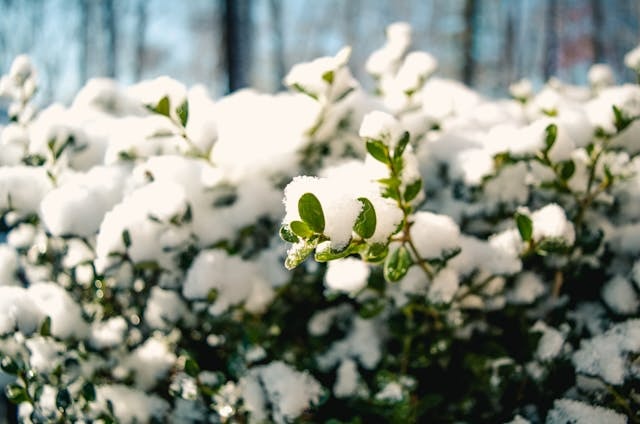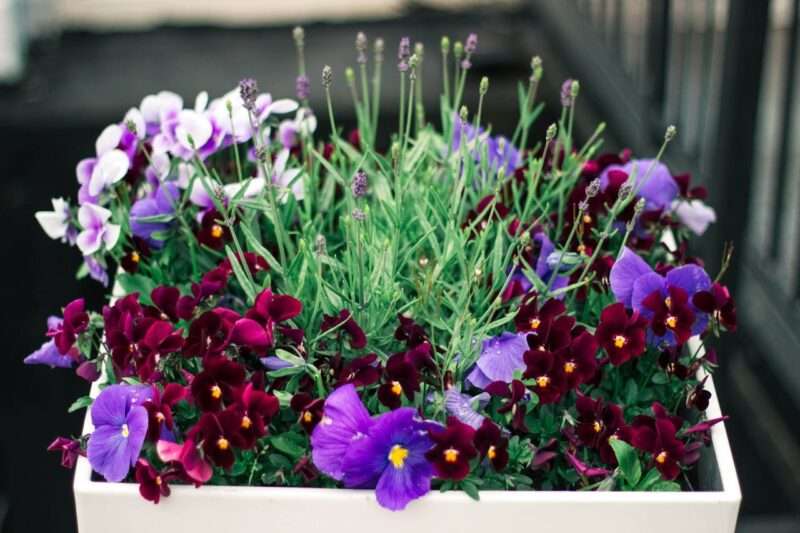Adapting city gardening practices after moving north might be challenging due to the significant climate changes. The colder temperatures, shorter growing seasons, and extended frost periods directly affect planting schedules. Frost often begins earlier in the fall and lasts longer into spring, limiting the time for certain crops to thrive. In contrast, reduced sunlight means plants may need more light exposure during the day. Adjustments in watering are also necessary since colder climates require less frequent watering, but soil drainage becomes more important. These factors should be considered to keep gardens thriving in northern regions.
Cold-Hardy Plants for Your Northern City Gardening Practices
Select the right cold-hardy plants to adapt your garden to colder climates. Opt for perennials that can survive the cold winter months and return year after year, building resilience to the northern weather. Plants like hostas, lavender, and certain ferns are excellent choices for cold-tolerant perennials. Root vegetables like carrots, beets and leafy greens like spinach and kale thrive in colder weather, making them perfect additions to your northern garden. These plants benefit from the cool temperatures and can continue to grow even as frost approaches. Radishes, lettuce, and peas mature quickly and can be harvested before the frost returns. Additionally, consider cold-hardy fruits such as blueberries and raspberries, which can withstand freezing temperatures and produce abundant crops every winter.

Watering Techniques for Colder Weather
Adjusting your watering techniques is essential when gardening in colder climates. To prevent overwatering, consider the reduced evaporation rates common in northern regions. Cooler temperatures mean that soil retains moisture for much longer periods. Watering too frequently can lead to root rot, especially during the colder months when plants enter a dormant phase and require less water. Proper drainage is key to avoiding waterlogged soil, which can cause serious harm to plant roots. Using raised beds or containers with good drainage holes can help keep the soil from becoming saturated.
The best time for watering
Watering early in the day is highly recommended, allowing the soil ample time to absorb moisture before nighttime temperatures drop and freezing becomes a concern. In contrast, watering at night can cause water to freeze on the surface, leading to plant damage or frostbite. Additionally, be mindful of the type of soil you’re using, as heavier soils like clay may retain water longer, while sandy soils may require more frequent, lighter watering. Adapting your watering schedule and understanding the needs of your plants will help protect them and promote healthy growth throughout the colder seasons.

The Importance of Sunlight Management
Sunlight management is vital in city gardening practices in the northern parts, where shorter days and reduced light intensity can significantly impact plant growth. Start by observing and identifying areas of your garden that receive the most sunlight throughout the day, as this will help you determine the best spots for planting. For example, use reflective surfaces like mirrors, aluminum foil, or white-painted walls. They can bounce additional light onto plants, maximizing the available natural sunlight. This simple technique can boost light exposure, especially in shadowy or enclosed areas. You can also include artificial lights that mimic sunlight, extending daylight hours for your plants. Of course, it’s essential to position your plants where they will receive the most direct sunlight throughout the day, especially during peak sunlight hours. Taller plants can be placed in areas with more light, while smaller or shade-tolerant species can thrive in less sunny spots.
Building Wind Protection
Not to mention, wind is a significant factor in northern climates, potentially causing damage to your plants by drying them out or breaking stems. Building wind protection around your urban garden is essential to safeguard delicate plants. You can create barriers like fences, trellises, or hedges to block strong gusts. These structures can serve as windbreaks, reducing the direct impact of wind on your garden. In addition, plants like shrubs can also act as natural shields. In short, wind protection helps maintain soil moisture by preventing the wind from rapidly drying out the soil, keeping your plants hydrated, and reducing the risk of damage. Adding protection allows your plants to grow more securely in exposed areas.
Managing Frost and Freezing Temperatures
Above all, managing frost and freezing temperatures is crucial to keeping your garden healthy in colder climates. Regularly monitor weather forecasts to protect your plants from unexpected frost. Using row covers, frost blankets, or cloches can provide a protective barrier, preventing frost from directly hitting delicate plants. Another key point is that mulch is an effective way to insulate plant roots, keeping the soil warmer and reducing the risk of freezing. Applying a thick layer of organic mulch can greatly affect plant survival during cold spells. Additionally, consider moving potted plants indoors when harsh weather is expected, as they are more vulnerable to frost. These steps will help protect your city’s gardening practices during colder months.

The Beauty of Winter City Gardening
Northern gardens can be vibrant and beautiful during winter with the right plant choices. Evergreens provide year-round greenery and structure, while winter berries like Holly add pops of color against the snow. With their striking shapes and textures, ornamental grasses stand out in the winter landscape. Then again, the snow can be used creatively in landscaping, creating a serene and magical atmosphere in your garden. The snow outlines branches, grasses, and pathways, giving everything a fresh look. Enjoy the seasonal changes and the unique beauty winter brings to your city garden as it transforms into a peaceful and striking environment.
Conclusion
Adapting city gardening practices after moving north requires careful adjustments to ensure your garden thrives in colder climates. From selecting cold-hardy plants to managing frost, these techniques can help you overcome the challenges of shorter growing seasons and harsher weather. Proper sunlight management, wind protection, and watering adjustments will keep your plants healthy throughout the year. In short, planning and using the right strategies will allow your city garden to flourish despite the colder conditions. Whether you’re growing vegetables, flowers, or shrubs, these practices will make your northern garden successful.
Author’s Bio: Susanne White is a moving consultant with professionalmoverottawa.com, a company dedicated to easing the stress of moving through expert relocation services. With her background in relocation logistics and a passion for gardening, Susanne provides insightful advice for adapting gardening practices to different climates, ensuring gardens thrive despite the new conditions.
Photos used:
Featured Image
Basket full of fruits and vegetables
Watering a hanging plant
Snow on top of plants
